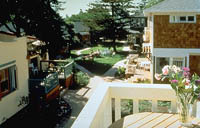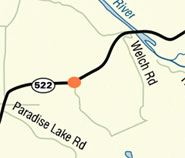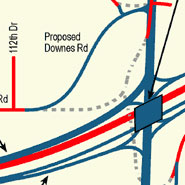A
Cohousing
community is a kind of
intentional community
composed of private
homes, complete with full
kitchens, supplemented by
extensive common facilities. A
cohousing
community is planned, owned
and managed by the residents,
groups of people who want more
interaction with their
neighbours. Common facilities
vary but usually include a large
kitchen and
dining room where residents
can take turns
cooking for the community.
Other facilities may include a
laundry,
child care facilities,
offices, game room, tv room,
tool room, and a
gym. Through spatial design
and shared social and management
activities, cohousing
facilitates interaction among
neighbours, for the social and
practical benefits. There are
also economic and environmental
benefits to sharing resources,
space and items.
Because each cohousing community
is planned in its context, a key
feature of this model is its
flexibility to the needs and
values of its residents and the
characteristics of the site.
Cohousing can be
urban,
suburban or
rural. The physical form is
typically compact but varies
from
low-rise apartments to
townhouses to clustered
detached houses. They tend
to keep
cars to the periphery which
promotes walking through the
community and interacting with
neighbors as well as increasing
safety for children at play
within the community. Shared
green space is another
characteristic, whether for
gardening, play, or places to
gather.
There are over 65 operating
communities in North America
with about 200 others in the
planning phases. There are also
communities in
Australia, the
UK and other parts of the
world.
Cohousing differs from some
types of
intentional communities in
that the residents do not have a
shared economy or have a
common set of beliefs or
religion. Models of
consensus democracy are
usually involved in managing
co-housing. Individuals do take
on leadership roles, such as
being responsible for
coordinating a
garden or facilitating a
meeting.
Legal ownership in a cohousing
community uses existing legal
forms of real estate ownership
that may include individually
titled houses with common areas
owned by a homeowner
association,
condominiums or a housing
co-operative however
cohousing differs because of the
emphasis on the social
relationships among its
residents.
The modern theory of cohousing
originated in
Denmark in the
1960s among groups of
families who were
dissatisfied with existing
housing and communities that
they felt did not meet their
needs. It was introduced to
North America by two
American
architects,
Kathryn McCamant and
Charles Durrett, who visited
several cohousing communities
and wrote a book about it,
Cohousing: A Contemporary
Approach to Housing Ourselves.
Several cohousing communities
exist in
Denmark and the
west coast of the U.S.A,
especially
California.
Historically, most people lived
in dwellings with their
extended families - the
single family home was for
upper and upper-middle classes.
Thus, the idea is very old, but
the idea of choosing such
housing when one can afford more
space and separate facilities
for each immediate family is
more associated with the
1960s.
Some elements of the
Jewish Renewal at that time
for instance encouraged the
interconnection of basements
among neighbours, to create
common
shared space useful
especially for celebrations.
Each house would however remain
separate and have doors to keep
it separate from its neighbour.
Eco-feminism
is particularly supportive of
co-housing due to
child care convenience and
the immediate availability of
mutual support in cases of
spousal abuse including
verbal abuse. In effect, the
cohousing can act as a
women's shelter, especially
if the females exclusively hold
ownership rights - as in the
traditional
Huron or
Iroquois
longhouse which were more or
less run by the elder women.
The
Eden Alternative
nursing home and the rural
eco-village embrace
cohousing as well, but with
specific assumptions about the
Ecological Footprint and
desirability of
multi-generation circles to
run things. In combination, they
approach
eco-anarchism or
New Tribalism, and
transcending housing itself as
an issue.
External
links




